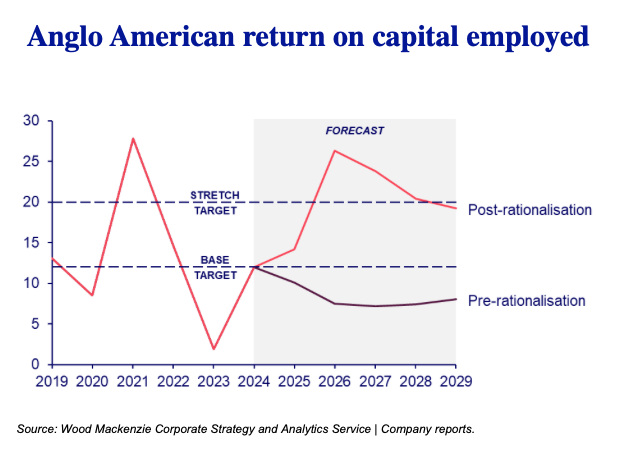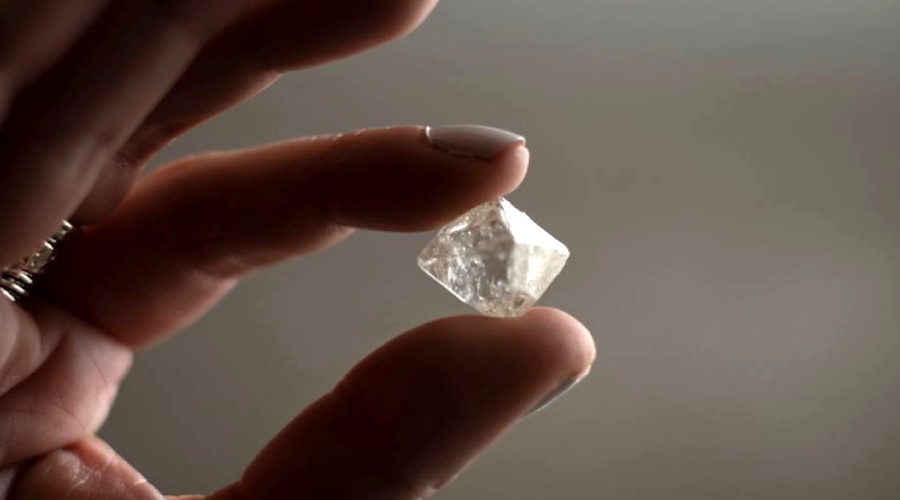The company, which rejected BHP’s $43 billion second offer on Monday, continues to have businesses in copper, iron ore and crop nutrients. Anglo American owns three of the top 10 producing copper mines in South America, with plenty of room for growth. It is also a major producer of high-grade iron ore, which has historically accounted for the lion’s share of Anglo’s profits.
The company plans to reduce investment in its fertilizer business from the recently acquired 1 billion pounds ($1.26 billion) to 200 million pounds ($251 million) by 2025. The next step will be to find strategic investors who can support the resumption of large-scale operations. Woodsmith polyhalite project starting in 2026, CEO Duncan Wanblad said.
While the 107-year-old miner was already in the midst of its own asset review, the timeline had to be accelerated after BHP’s sweet offer, Wanblad said. The overhaul, described by a top executive as a “clear, impactful and decisive plan,” will unlock value for Anglo shareholders by creating a “radically streamlined” company focused on “world-class assets,” he said on a media call. , which followed the US. statement.
“These actions are the most radical Anglo-American changes in decades,” Vanblad added.

The Anglo boss said the miner would be “extremely overvalued” by the end of 2025, when the restructuring is complete, “so much so that if anyone wanted to buy us at the moment they would have to pay a huge amount for it”.
The surprise announcement is seen by some analysts as a strategy to attract interest from other potential buyers for the company’s non-core divisions, as well as encourage aggressive takeover attempts by BHP.
“Those assets that are put up for sale will no doubt attract competitors, some in total (perhaps to force a bid for the group, as BHP is trying to do before it breaks up) and some in parts,” said an energy and mining analyst. Jamie Maddock at Quilter Cheviot said in a post:
BMO analyst Alexander Pearce said cost-cutting at Woodsmith could be enough to give Anglo American a reasonable revaluation. “The intention to accelerate strategic change is likely to be well received, even though the company will be less differentiated from its peers.”
Pearce said Anglo’s plans target $1.7 billion in cost savings from the new portfolio configuration, including $800 million in cost savings from the end of 2025.
The move would take Anglo from the most diversified to the most concentrated major miner, according to research firm Wood Mackenzie.
“We believed that a major reshuffle of Anglo American’s portfolio was inevitable,” said James Whiteside, director of corporate research for metals and mining at Wood Mackenzie. “However, the choice to divest or divest entire segments of its portfolio is consistent with the company’s new strategic priorities.”
Lost shine
De Beers, the world’s largest diamond producer by value, was founded in 1888 in South Africa by British mining magnate Cecil Rhodes. The company was partly owned by the Oppenheimer dynasty, which also founded Anglo American, until the family sold 40% of its shares to Anglo American itself in 2012.
The diamond producer used to be a prized possession of Anglo’s sprawling business empire. It dominated the global gemstone market in terms of both overall sales and public perception, thanks to the lasting impact of the 1940s “Diamond is Forever” campaign.

The diamond industry, and De Beers in particular, has faced challenges over the past three years due to declining sales, a sluggish global economy and the rise of alternatives to lab-grown diamonds.
Mark Wanblad said De Beers remains a “great business” and noted that the unit has already attracted interest from prospective investors, without naming names.
Anglo’s CEO expressed confidence that the “structural issues” facing the diamond industry will be resolved. “There is no doubt in our mind that the structural problems that everyone is talking about will pass,” he said.
Market reaction
The company’s bold move could derail BHP’s plans to transform itself into a copper giant, controlling about 10% of global production of the metal at a time when an urgent transition to a green economy is boosting both prices and demand.
Wood Mackenzie highlighted that iron ore and copper have been top cash generators for Anglo over the past five years, contributing 58% of the company’s underlying earnings before interest, tax, depreciation and amortization (EBITDA).
“Looking forward, even without fresh investment, copper will outperform iron ore in cash generation, allowing Anglo American to use the proceeds to focus on brownfield growth in these core assets,” Whiteside said.
South African Mining Minister Gwede Mantashe said Financial Times that he would prefer Anglo’s restructuring plan to a BHP-backed split-and-takeover. “I am pleased with the rejection of the BHP deal and hope that it can go ahead and then Anglo can be restructured to optimize shareholder value,” he said.
The minister’s support is crucial as it reflects the government’s stance on restructuring the country’s major mining player.
The Church of England Pension Board, a UK asset owner and long-term shareholder in Anglo American, was also pleased with today’s announcement.
“We need more companies like Anglo ready to grasp the opportunities to operate in developing and emerging markets like Africa, not fewer,” the statement said. “As a UK pension fund, we want the London Stock Exchange to remain a premium market for mining companies.”
Activist fund Elliott, one of Anglo’s top 10 shareholders after building a $1 billion stake, is expected to make a statement later in the day.
Ashwin Pillay, senior partner at law firm Charles Russell Speechlys, said the new plan addresses shareholder concerns about the undervaluation of Anglo’s copper mines due to non-value-added operations such as the diamond division. He also said there was still room for BHP to increase its offer, possibly including a cash component to make the deal more attractive.
Analysts believe Anglo American could easily acquire $25 billion in asset value by divesting or divesting (gross exit costs) of its other commodity assets such as platinum, steelmaking coal and nickel over the next few years. For Wood Mackenzie, this represents a potential upside of $9.1 billion to the research firm’s underlying net asset value (NAV).
Experts warn that the implementation of Anglo American’s strategic plan will not be easy. Showing a willingness to destructure the group, the company has expressed confidence in a proposed takeover by BHP, potentially making it more palatable to regulators in key markets such as South Africa, Wood Mackenzie’s Whiteside said.
Whiteside agrees that Anglo’s plan is certainly bold, and the equivalent loss of 39% of revenue by 2024 would be transformative. However, performance risk is significant and is borne entirely by Anglo-American shareholders. If BHP’s increased offer goes ahead, it could be seen as a simpler option for shareholders.
“Anglo American’s strategic plan is certainly bold, and the equivalent of a 39% loss in 2024 earnings will be transformative,” Whiteside concludes. “However, the execution risk is substantial and fully borne by Anglo-American shareholders, so if BHP’s increased offer goes ahead it could be seen as a simpler option for shareholders.”
Shares in Anglo American fell 2.8% to 2,632 by midday in London, but later recovered to close 1.4% higher at 2,745p. That leaves the company with a market capitalization of $44 billion as of Tuesday evening.
